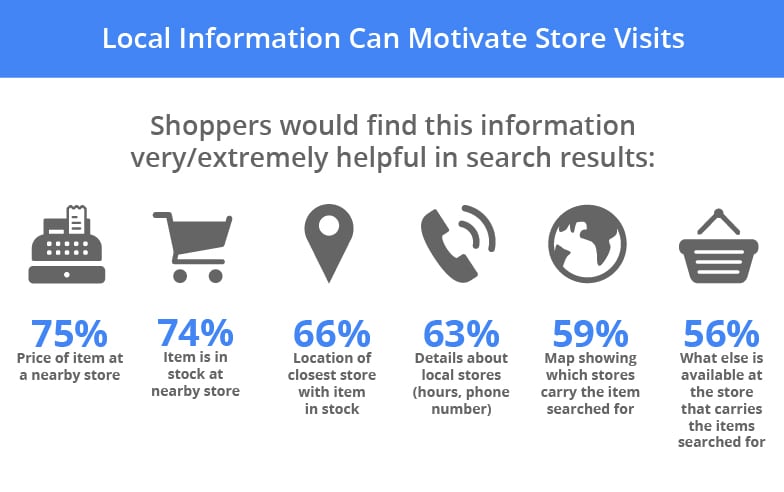 Digital marketing has become an essential component of the business strategy for online stores and retailers. With the rise of e-commerce, businesses need to leverage effective digital marketing tactics to stand out in a crowded marketplace. Explore the most effective digital marketing tactics that produce significant results for e-commerce websites and companies. Digital marketing tactics for online stores that work.
Digital marketing has become an essential component of the business strategy for online stores and retailers. With the rise of e-commerce, businesses need to leverage effective digital marketing tactics to stand out in a crowded marketplace. Explore the most effective digital marketing tactics that produce significant results for e-commerce websites and companies. Digital marketing tactics for online stores that work.
E-commerce has transformed the way consumers shop. Online stores and retailers must utilize digital marketing tactics to attract, engage, and convert customers. This article delves into the most effective digital marketing strategies that have proven to be successful for e-commerce businesses, providing insights into their benefits and real-world examples of their impact.
Search Engine Optimization (SEO)
Importance of SEO
SEO is the foundation of digital marketing for e-commerce. It involves optimizing your website to rank higher in search engine results pages (SERPs), thereby increasing visibility and organic traffic. According to a study by BrightEdge, organic search drives 53.3% of all website traffic.
Key SEO Strategies
- Keyword Research: Identifying relevant keywords that potential customers use to search for products.
- On-Page SEO: Optimizing product descriptions, meta tags, and headers to improve search engine rankings.
- Technical SEO: Ensuring website speed, mobile-friendliness, and proper indexing by search engines.
- Backlinking: Acquiring high-quality backlinks from reputable sites to boost domain authority.
Case Study: SEO Success Story
An example of successful SEO implementation is the case of The Home Depot. By focusing on keyword optimization and improving their website structure, they saw a 25% increase in organic search traffic and a significant boost in online sales.
Content Marketing
Creating Valuable Content
Content marketing involves creating and sharing valuable content to attract and engage a target audience. For e-commerce, this means producing content that educates, informs, and entertains potential customers.
Types of Content That Drive Engagement
- Blog Posts: Informative articles that address customer pain points and provide solutions.
- Product Guides: Detailed guides that help customers make informed purchasing decisions.
- Videos: Engaging video content showcasing product features and customer testimonials.
- Infographics: Visually appealing graphics that present information in an easy-to-digest format.
Benefits of Content Marketing
- Increased Traffic: Companies that blog receive 55% more website visitors than those that don’t.
- Higher Engagement: Quality content keeps visitors on the site longer, increasing the chance of conversion.
- SEO Benefits: Regularly updated content helps improve search engine rankings.
Social Media Marketing
Leveraging Social Platforms
Social media platforms are powerful tools for e-commerce marketing. They allow businesses to reach a broad audience, engage with customers, and build brand loyalty.
Influencer Marketing
Partnering with influencers can amplify your reach and credibility. Influencers have dedicated followings, and their endorsements can drive significant traffic and sales.
Case Study: Social Media Campaigns
One notable example is Gymshark, which used influencer marketing to grow its brand. By collaborating with fitness influencers on platforms like Instagram, Gymshark achieved a 200% year-over-year growth in sales.
Email Marketing
Personalization and Segmentation
Email marketing remains one of the most effective digital marketing tactics. Personalizing emails and segmenting the audience based on behavior and preferences can significantly improve engagement rates.
Automation Tools
Using automation tools like Mailchimp or HubSpot allows businesses to send targeted emails at scale, ensuring timely and relevant communication with customers.
Case Study: Effective Email Campaigns
A case in point is Amazon, which uses personalized email recommendations based on user behavior. This strategy contributes to Amazon’s impressive conversion rates and customer retention.
Pay-Per-Click (PPC) Advertising
Benefits of PPC
PPC advertising, such as Google Ads, allows businesses to target specific keywords and demographics, ensuring that their ads reach the right audience. It offers measurable results and a high return on investment (ROI).
Effective PPC Strategies
- Keyword Optimization: Bidding on relevant and high-intent keywords.
- Ad Copy: Crafting compelling ad copy that drives clicks.
- Landing Pages: Creating optimized landing pages to increase conversion rates.
ROI of PPC Advertising
According to WordStream, businesses make an average of $2 in revenue for every $1 spent on Google Ads, demonstrating the effectiveness of PPC in driving sales.
Affiliate Marketing
How Affiliate Marketing Works
Affiliate marketing involves partnering with affiliates who promote your products in exchange for a commission on sales. This tactic expands your reach without upfront advertising costs.
Benefits for E-commerce
- Cost-Effective: Pay only for actual sales generated.
- Increased Reach: Affiliates can access audiences that you might not reach on your own.
- Improved SEO: Quality backlinks from affiliate websites can boost your search engine rankings.
Case Study: Successful Affiliate Programs
The Shopify affiliate program is a great example. By leveraging influencers and bloggers, Shopify increased its user base significantly, demonstrating the power of affiliate marketing.
Conversion Rate Optimization (CRO)
Importance of CRO
CRO focuses on improving the percentage of website visitors who complete a desired action, such as making a purchase. It involves analyzing user behavior and making data-driven changes to the website.
Techniques for Improving Conversion Rates
- A/B Testing: Testing different versions of webpages to see which performs better.
- User Feedback: Gathering insights from customers to improve the user experience.
- Simplified Checkout Process: Reducing the number of steps required to complete a purchase.
Case Study: CRO Impact on Sales
An example is the online retailer ASOS, which implemented a one-page checkout process. This change led to a 50% reduction in abandoned carts and a significant increase in conversion rates.
Customer Reviews and Testimonials
Building Trust through Reviews
Customer reviews and testimonials are powerful tools for building trust and credibility. According to a study by BrightLocal, 87% of consumers read online reviews for local businesses.
Strategies to Encourage Reviews
- Follow-Up Emails: Sending emails requesting reviews after a purchase.
- Incentives: Offering discounts or rewards for leaving reviews.
- User-Friendly Review System: Making it easy for customers to leave reviews on your site.
Impact of Reviews on Sales
Positive reviews can significantly impact sales. Spiegel Research Center found that displaying reviews can increase conversion rates by up to 270%.
Digital marketing is crucial for the success of online stores and retailers. By implementing effective strategies like SEO, content marketing, social media marketing, email marketing, PPC advertising, affiliate marketing, CRO, and leveraging customer reviews, e-commerce businesses can drive traffic, increase engagement, and boost sales. These tactics, supported by facts and real-world examples, demonstrate their value and effectiveness in the competitive digital landscape. By staying updated with the latest trends and continuously optimizing their strategies, online retailers can achieve sustained growth and success in their digital marketing efforts. Digital marketing tactics for online stores is significant. Talk to an expert about your brand and marketing efforts. Why guess? Get a consultation.











